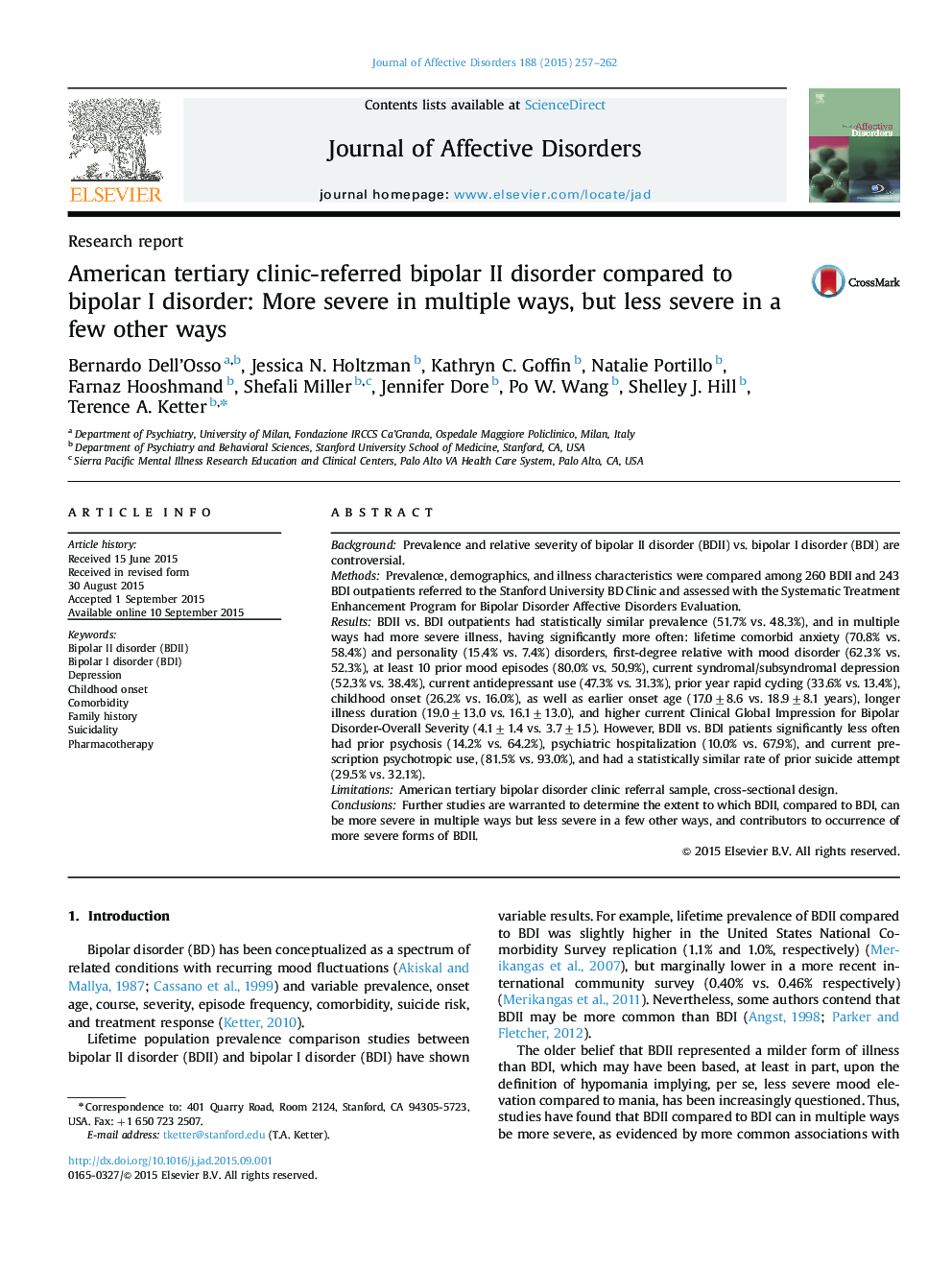| کد مقاله | کد نشریه | سال انتشار | مقاله انگلیسی | نسخه تمام متن |
|---|---|---|---|---|
| 6231090 | 1608137 | 2015 | 6 صفحه PDF | دانلود رایگان |

- Bipolar II compared to bipolar I disorder can be more severe in multiple ways.
- Bipolar II compared to bipolar I disorder can be less severe in a few different ways.
- Further studies warranted to determine contributors to occurrence of more severe forms of BDII.
BackgroundPrevalence and relative severity of bipolar II disorder (BDII) vs. bipolar I disorder (BDI) are controversial.MethodsPrevalence, demographics, and illness characteristics were compared among 260 BDII and 243 BDI outpatients referred to the Stanford University BD Clinic and assessed with the Systematic Treatment Enhancement Program for Bipolar Disorder Affective Disorders Evaluation.ResultsBDII vs. BDI outpatients had statistically similar prevalence (51.7% vs. 48.3%), and in multiple ways had more severe illness, having significantly more often: lifetime comorbid anxiety (70.8% vs. 58.4%) and personality (15.4% vs. 7.4%) disorders, first-degree relative with mood disorder (62.3% vs. 52.3%), at least 10 prior mood episodes (80.0% vs. 50.9%), current syndromal/subsyndromal depression (52.3% vs. 38.4%), current antidepressant use (47.3% vs. 31.3%), prior year rapid cycling (33.6% vs. 13.4%), childhood onset (26.2% vs. 16.0%), as well as earlier onset age (17.0±8.6 vs. 18.9±8.1 years), longer illness duration (19.0±13.0 vs. 16.1±13.0), and higher current Clinical Global Impression for Bipolar Disorder-Overall Severity (4.1±1.4 vs. 3.7±1.5). However, BDII vs. BDI patients significantly less often had prior psychosis (14.2% vs. 64.2%), psychiatric hospitalization (10.0% vs. 67.9%), and current prescription psychotropic use, (81.5% vs. 93.0%), and had a statistically similar rate of prior suicide attempt (29.5% vs. 32.1%).LimitationsAmerican tertiary bipolar disorder clinic referral sample, cross-sectional design.ConclusionsFurther studies are warranted to determine the extent to which BDII, compared to BDI, can be more severe in multiple ways but less severe in a few other ways, and contributors to occurrence of more severe forms of BDII.
Journal: Journal of Affective Disorders - Volume 188, 1 December 2015, Pages 257-262